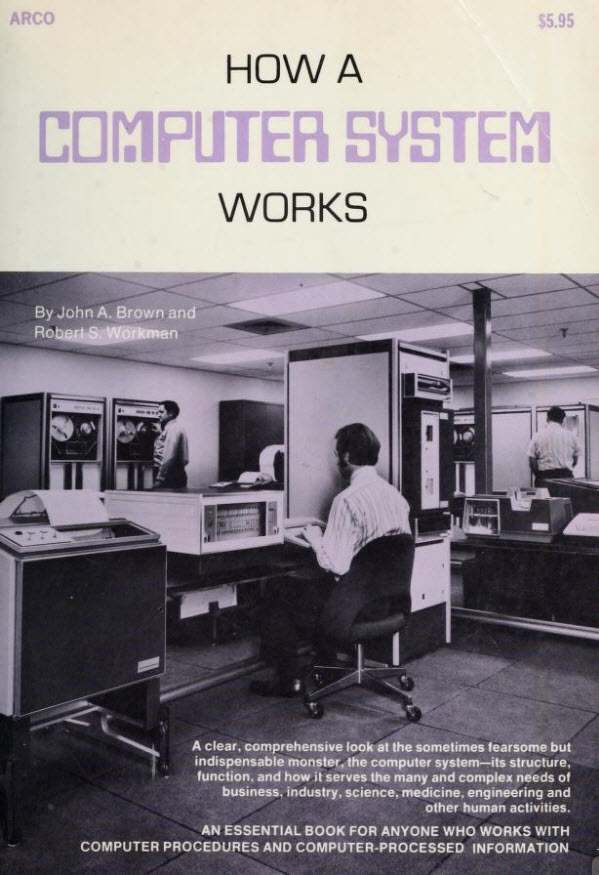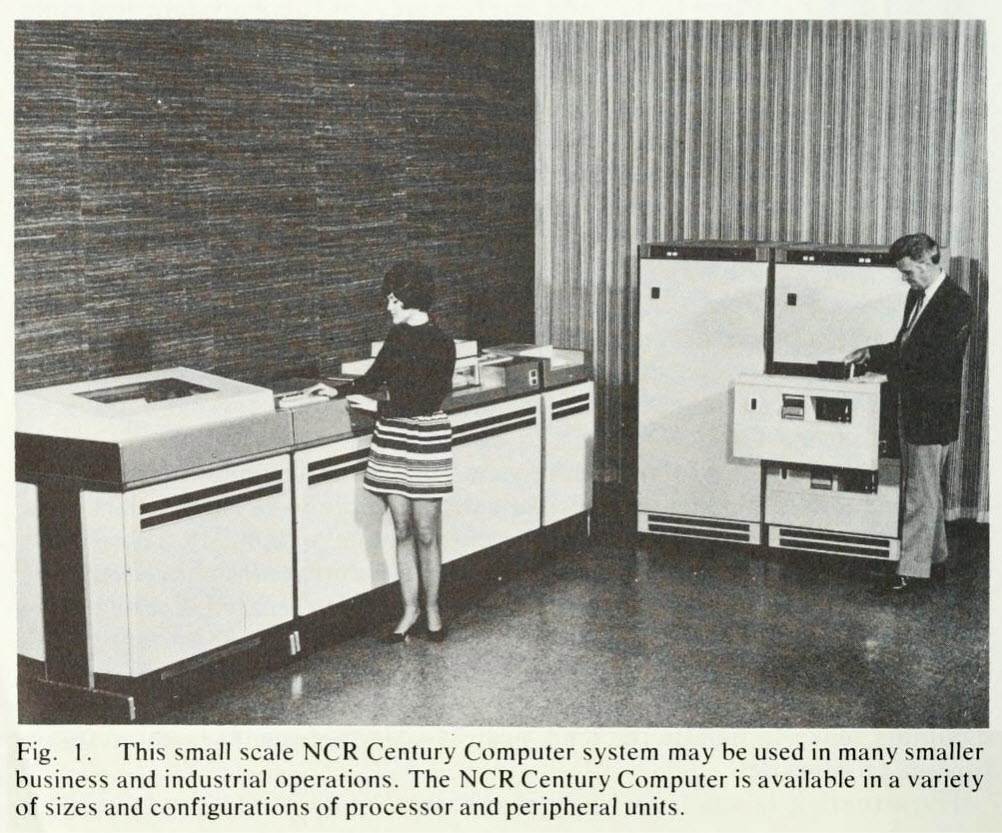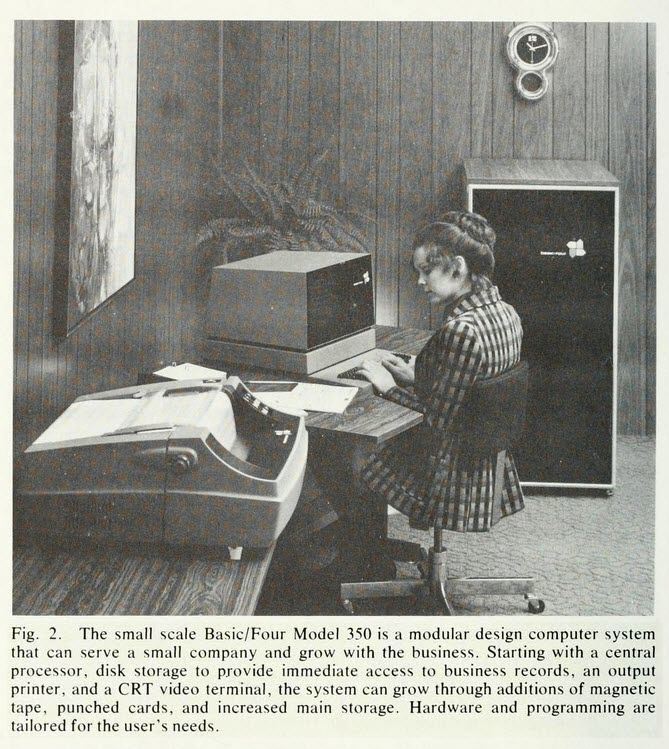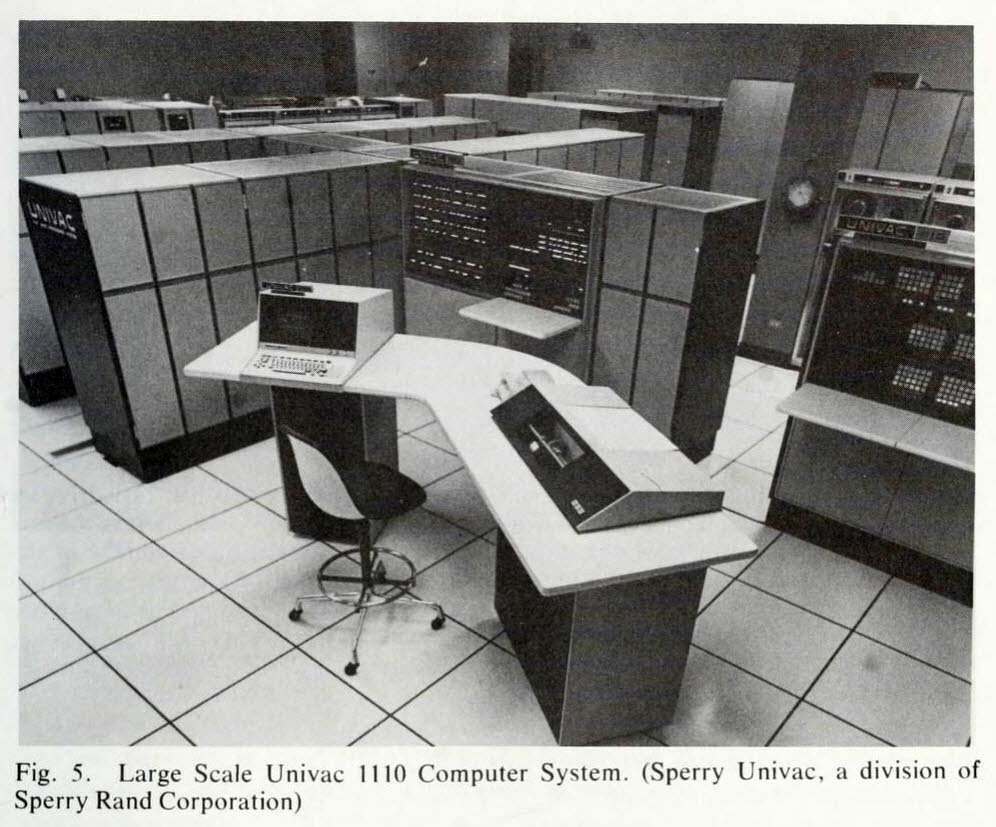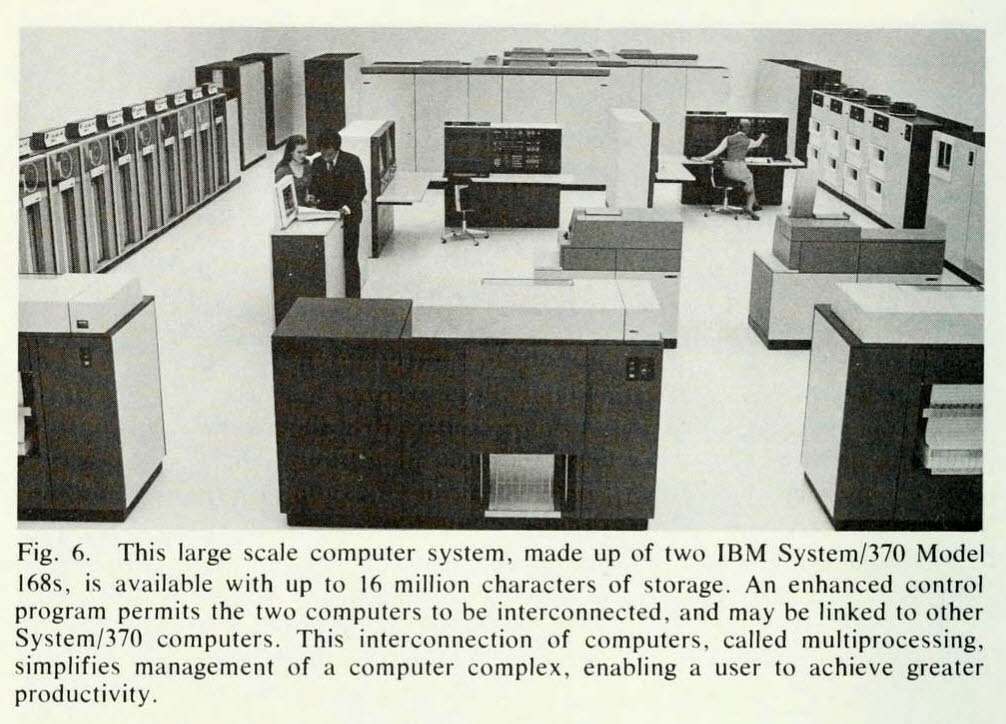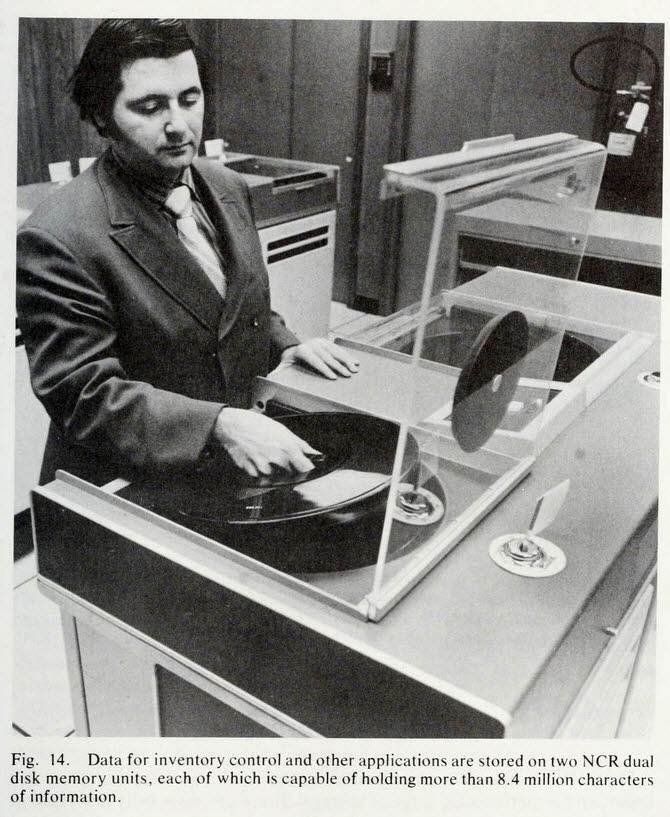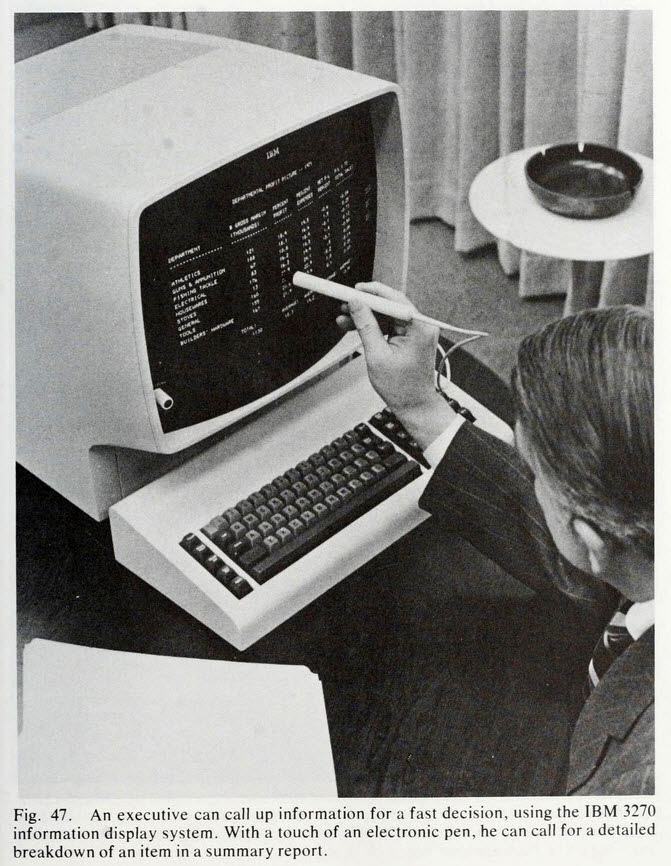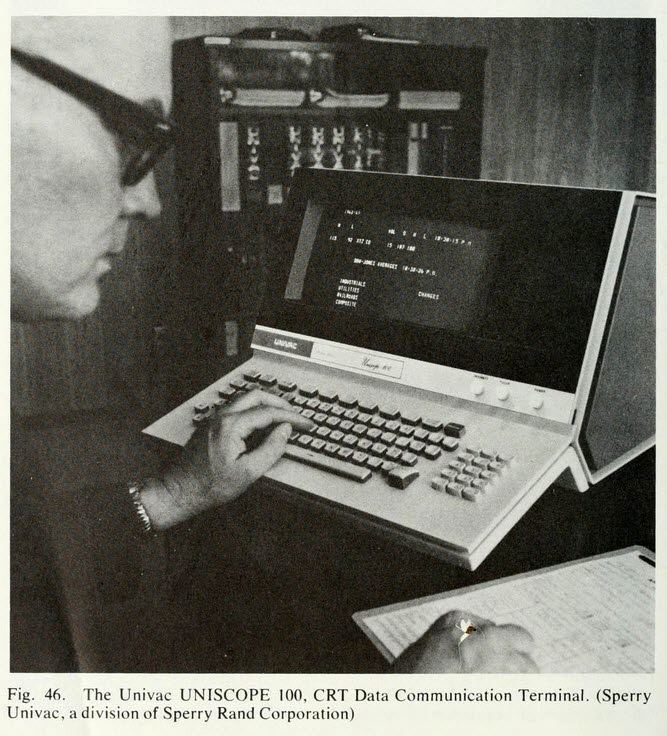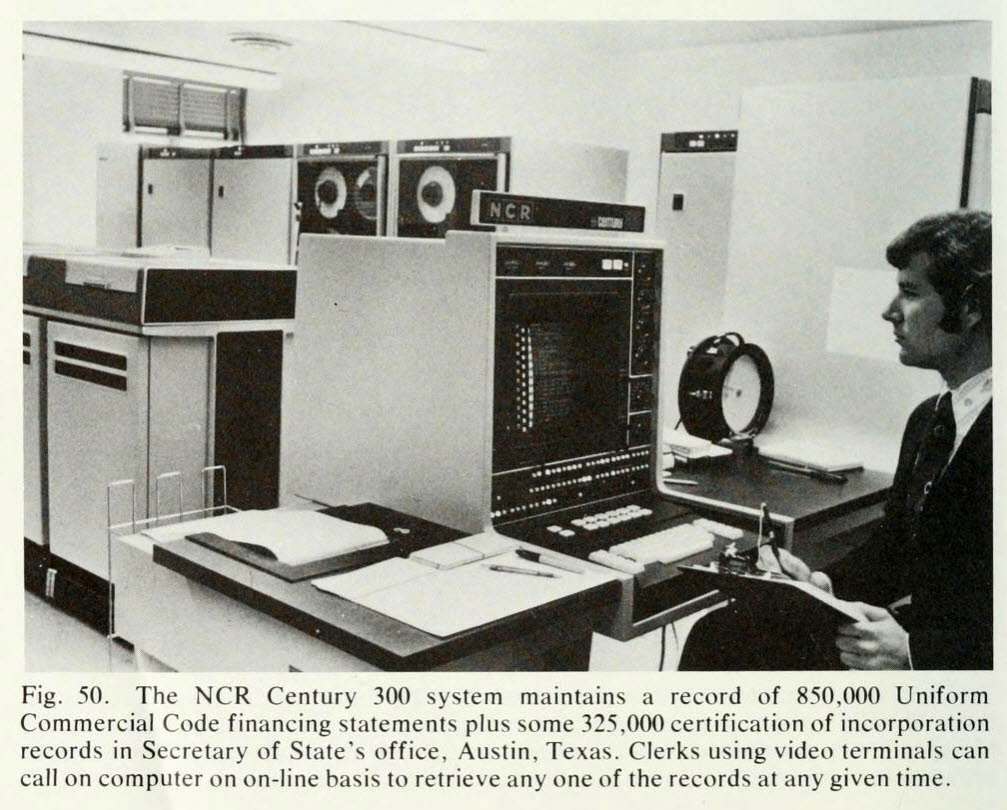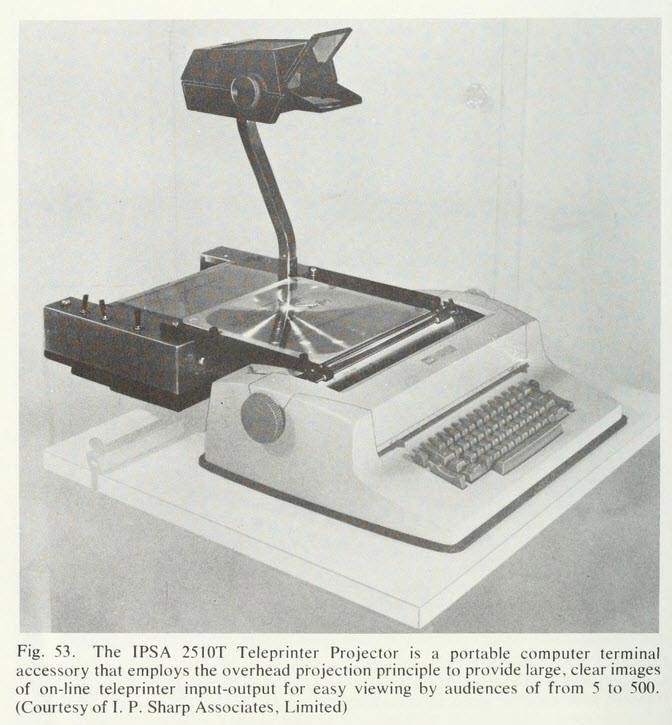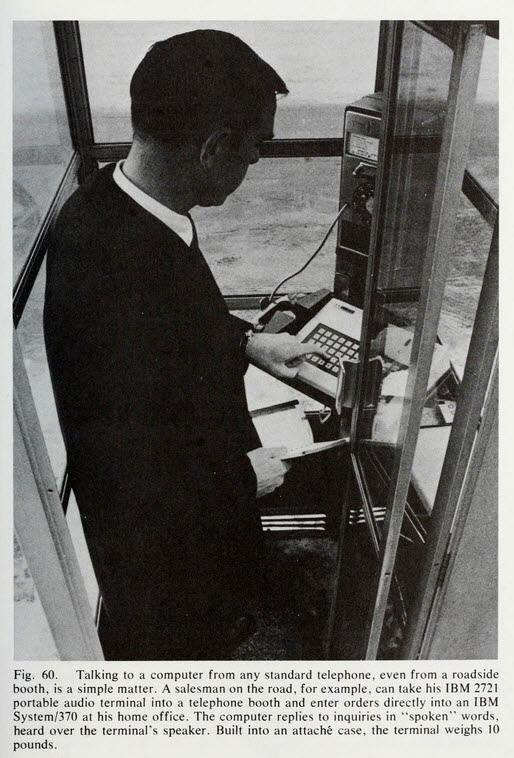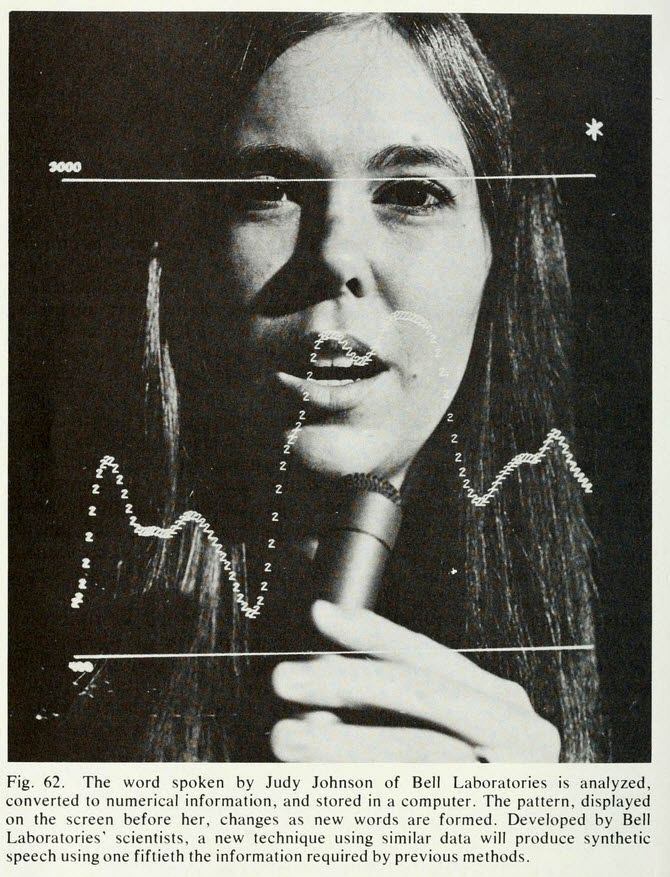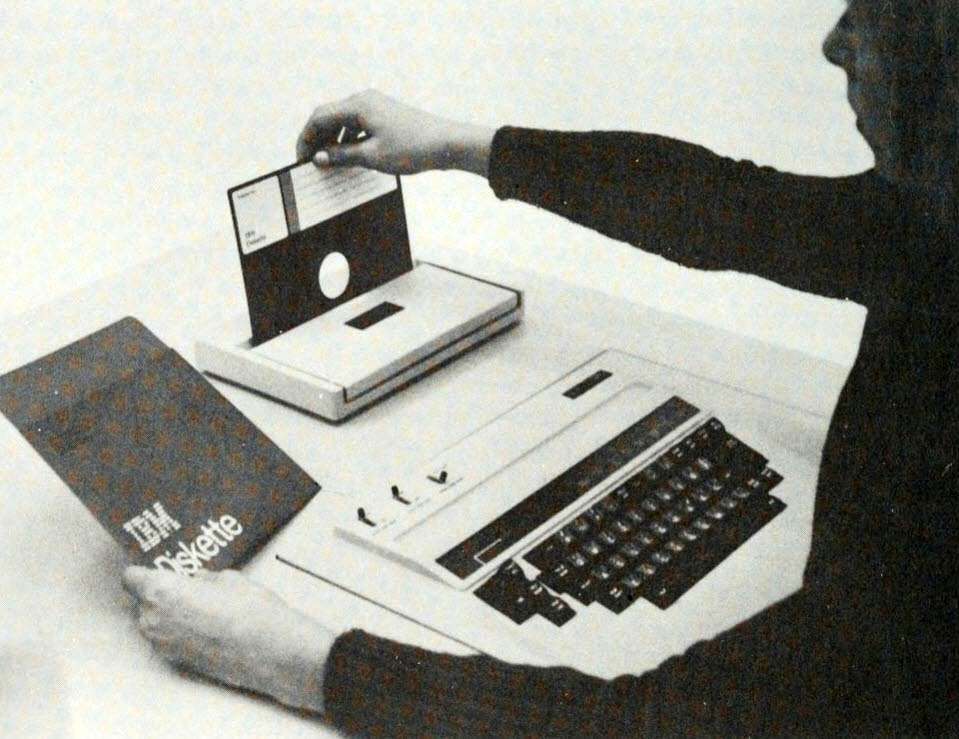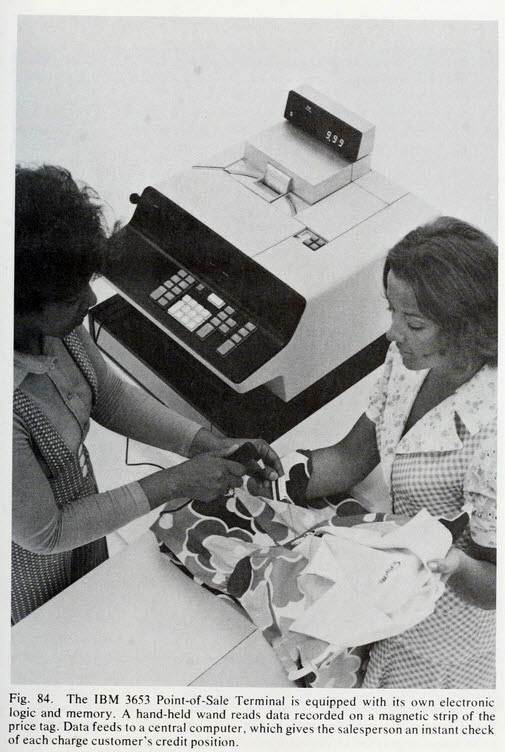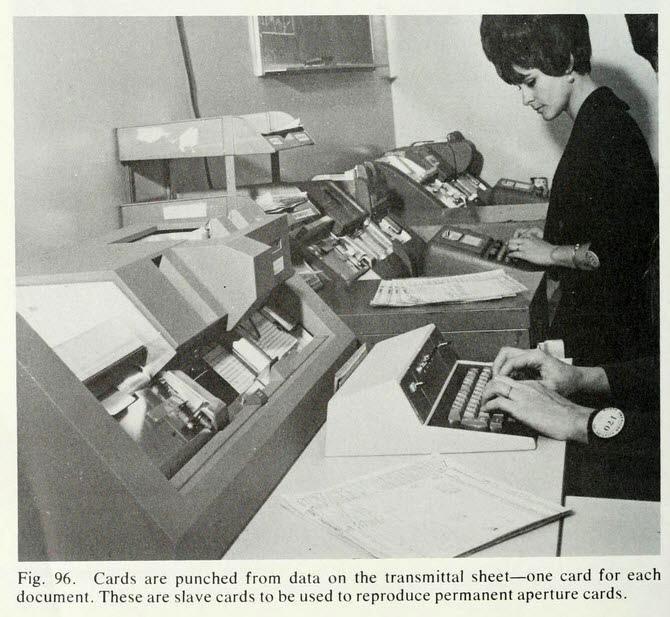I thought it might be fun to take a quick tour through a book on computing from 1975. There’s just something about those gigantic whirring boxes that makes my heart beat faster. How A Computer System Works is fully illustrated and a wonder to behold. Let’s take a walk through the pages of antiquated technology, shall we?
It’s amazing to think that your cell phone can do more than this behemoth could ever dream of. Plus we have our first miniskirt sighting, so we’re off to a good start.
CRT = cathode ray tube
MEDIUM SCALE?
Here’s the Large Scale Univac – basically a maze of cabinets. I’ll bet that room was loud. Whoever sat at that desk probably felt like Captain Kirk.
The early seventies: high hemlines and huge computers. It’s amazing to think that we shot people into space with this technology.
This system would have trouble handling the data from this single blog post.
“Characters of Information” is the antiquated way of saying “bytes”. So 8.4 MB.
I don’t think these pens worked too well. It would be another three decades before the touch screen really became a part of everyday life. I’m glad to see he’s got his ashtray situated nearby.
Early “green screen” terminal connected to a mainframe.
Link to the newspaper article about this new device
When the photo shoot was over, he went back to playing solitaire.
This is just too awesome to put into words, so I won’t even try.
I miss the dot matrix printer. There was something cool about the way it struck those dots line by line right in front of you. Laser and Inkjet are so “hidden” – the page just blandly spits out fully complete. Dot matrix put some elbow grease into their printouts.
I sure hope there’s no mistakes on that copy, because you’ll have to type the whole damned thing again. Typos could be devastating back then.
If I walked up and found this going on in a telephone booth, I’d think some crazy shit was about to go down.
One invention I could do without is the autotune. It makes even the lousiest singer sound on key…… of course, it also sounds cold and inhuman, and has contributed to the destruction of the music industry as we know it. But I digress.
I remember certain software required multiple diskettes for installation. So, let’s say you had Aldus Pagemaker in 1987 – you were looking at maybe 15 disks, each with a label “1 of 15”, “2 of 15,” etc. Your 386 would huff and puff with each one, making the whole thing pretty time and labor intensive.
I think I’ve heard the first item ever to be scanned at a register was pack of Wrigley’s chewing gum.
Forget the microfiche, how about that micro-mini!
I sure hope these ladies weren’t under the impression technology was going to make their jobs easier.
He’s not driving while working that thing, is he? Seems a bit cumbersome.
Well, that’s all from this great book. All vintage technophiles out there, please chime in on any of these devices. I’d love to hear some info.
Would you like to support Flashbak?
Please consider making a donation to our site. We don't want to rely on ads to bring you the best of visual culture. You can also support us by signing up to our Mailing List. And you can also follow us on Facebook, Instagram and Twitter. For great art and culture delivered to your door, visit our shop.
